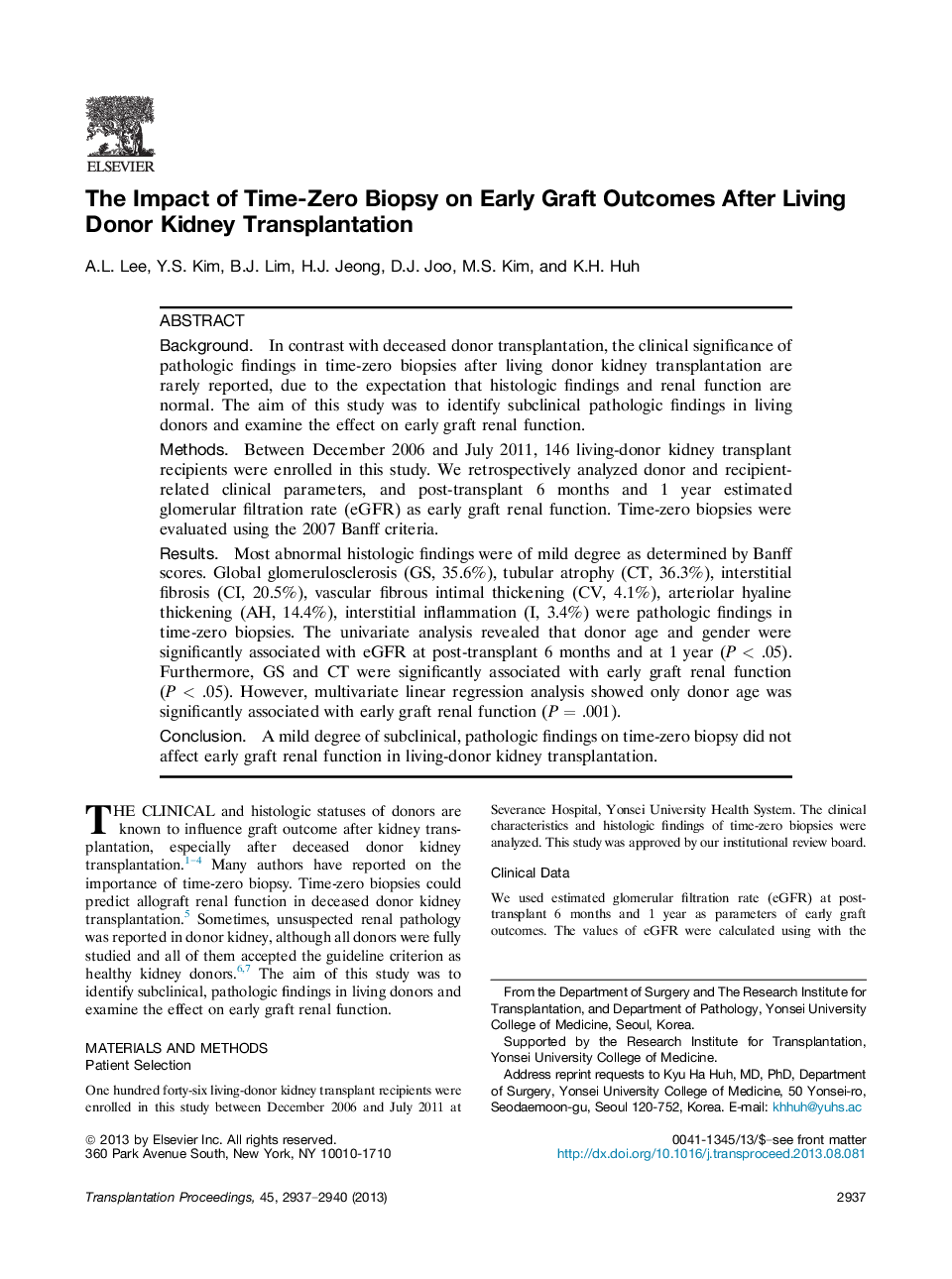| Article ID | Journal | Published Year | Pages | File Type |
|---|---|---|---|---|
| 6249900 | Transplantation Proceedings | 2013 | 4 Pages |
BackgroundIn contrast with deceased donor transplantation, the clinical significance of pathologic findings in time-zero biopsies after living donor kidney transplantation are rarely reported, due to the expectation that histologic findings and renal function are normal. The aim of this study was to identify subclinical pathologic findings in living donors and examine the effect on early graft renal function.MethodsBetween December 2006 and July 2011, 146 living-donor kidney transplant recipients were enrolled in this study. We retrospectively analyzed donor and recipient-related clinical parameters, and post-transplant 6 months and 1 year estimated glomerular filtration rate (eGFR) as early graft renal function. Time-zero biopsies were evaluated using the 2007 Banff criteria.ResultsMost abnormal histologic findings were of mild degree as determined by Banff scores. Global glomerulosclerosis (GS, 35.6%), tubular atrophy (CT, 36.3%), interstitial fibrosis (CI, 20.5%), vascular fibrous intimal thickening (CV, 4.1%), arteriolar hyaline thickening (AH, 14.4%), interstitial inflammation (I, 3.4%) were pathologic findings in time-zero biopsies. The univariate analysis revealed that donor age and gender were significantly associated with eGFR at post-transplant 6 months and at 1 year (PÂ < .05). Furthermore, GS and CT were significantly associated with early graft renal function (PÂ < .05). However, multivariate linear regression analysis showed only donor age was significantly associated with early graft renal function (PÂ = .001).ConclusionA mild degree of subclinical, pathologic findings on time-zero biopsy did not affect early graft renal function in living-donor kidney transplantation.
